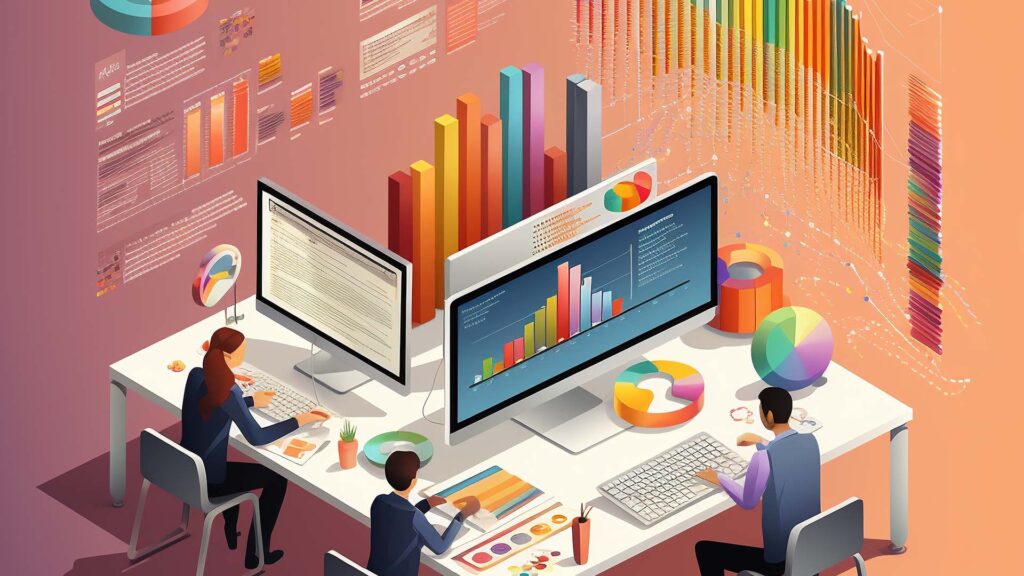How Big is the Graphic Design Industry in Today’s Market?
Today’s world, Graphic design has become an essential part of our daily life. Through advertisements, online platforms shows us for product packaging, social media content, and branding materials. With businesses completely relying on visual communication to engage customers, the graphic design industry continues to grow. But how big is the market today? What factors are driving its growth? And what does the future hold for graphic designers?
Table of Contents
ToggleThis article explore the market size and growth statistics, key sectors driving the industry, the main factor of technology, employment trends, essential skills, and the job outlook for graphic designers.
Market Size and Growth Statistics
The graphic design industry is a multi-billion-dollar market, and it continues to expand as businesses increase their investment in digital content, branding, and advertising.
Current Market Value
- As of 2023, the global graphic design market was valued at approximately $45 billion.
- The United States contributes over $13 billion annually to the industry.
- The market is projected to grow CAGR (Compound Annual Growth Rate) of 3-5% over the next five years.
Factors Driving Market Growth
- The rise of digital marketing and e-commerce has increased the demand for website design, social media graphics, and online branding.
- The shift towards remote work and freelancing has expanded job opportunities for independent graphic designers.
- Advancements in design software and AI tools have made graphic design more accessible, increasing demand from businesses of all sizes.
Regional Market Breakdown
- North America remains the largest market, driven by corporate branding and advertising needs.
- Asia-Pacific is experiencing rapid growth, especially in countries like China and India, where startups and e-commerce businesses are booming.
- Europe continues to be a major player, with strong demand for design in luxury, fashion, and digital media industries.
With digitalization at an all-time high, the industry is set to expand even further, opening new opportunities for designers worldwide.
Key Sectors Driving the Graphic Design Industry
Several industries heavily rely on graphic design to communicate with their audiences effectively. Here are some of the biggest sectors fueling the demand for design services:
- Branding and Marketing: Graphic design is essential for creating logos, brand identity materials, packaging, and promotional content. Companies invest heavily in branding to stand out in competitive markets.
- Digital Media and UI/UX Design: With businesses moving online, the demand for website design, app interfaces, and user experience (UX) design has skyrocketed. Companies need visually appealing, intuitive platforms to keep users engaged.
- Print Media and Publishing: Despite digitalization, print materials like magazines, book covers, business cards, and posters still require skilled graphic designers to create engaging visuals.
- Advertising and Social Media Platforms like Instagram, TikTok, and Facebook rely on eye-catching graphics to attract audiences. Infographics, animated ads, and social media banners are in high demand.
- E-commerce and Retail: From product packaging to online store graphics, graphic design plays a crucial role in how businesses present their products to customers.
The increasing need for compelling visuals ensures that graphic designers remain in high demand across various industries

The Market value of Graphic Design
Technology has transformed the way graphic designers work, making the industry more efficient and creative. Here’s how tech advancements are shaping the field:
- Advanced Software: Tools like Adobe Photoshop, Illustrator, Figma, and Canva have revolutionized design workflows, allowing for faster and more sophisticated creations.
- AI and Automation: Artificial intelligence-powered design tools like Adobe Firefly and DALL·E help designers automate repetitive tasks and generate creative assets quickly.
- Augmented Reality (AR) & Virtual Reality (VR): Brands are incorporating AR and VR in digital marketing, requiring designers to create immersive experiences, such as 3D product visualizations and interactive ads.
- Cloud-Based Collaboration: Remote work has increased the use of cloud-based design platforms like Figma and Adobe Creative Cloud, making teamwork and real-time editing seamless.
These technological advancements not only enhance creativity but also increase efficiency, making graphic design an even more valuable asset for businesses.
Job Market and Employment Trends
The graphic design job market is flourishing, with opportunities in various industries and work arrangements. Here’s what the employment landscape looks like today:
- Demand for Graphic Designers
- In 2024, there are about 139,868 graphic design businesses operating in the U.S.
. As of 2024, there are approximately 179,089 graphic designers employed in the United States.
- The demand for UI/UX designers has surged due to the growth of apps and websites.
- Companies prioritize digital content, increasing the need for skilled social media and branding designers.
- Freelance vs. Full-Time Employment
- Freelancing is growing, with platforms like Upwork, Fiverr, and 99designs offering designers the ability to work independently.
- Many companies outsource design work rather than hiring full-time employees, leading to an increase in freelance opportunities.
- Remote work options allow designers to collaborate with global clients without geographical limitations.
- Salary Expectations
- The average salary for a graphic designer ranges between $50,000 to $80,000 per year, depending on experience and specialization.
- Freelancers can earn more, especially if they build a strong client base and specialize in high-demand services like UI/UX design.
With digital transformation in full swing, job opportunities for graphic designers will continue to grow.
Industries That Depend on Graphic Design
Several industries rely heavily on graphic designers to create engaging and functional visuals:
- Technology & Software – UI/UX design for apps and websites.
- E-commerce & Retail – Product packaging, online store branding, and ads.
- Entertainment & Gaming – Animation, video game graphics, and movie posters.
- Healthcare & Corporate – Marketing materials, infographics, and branding.
- Education & E-Learning – Course materials, explainer videos, and digital content.
These industries fuel the demand for skilled designers, ensuring job security and career growth.
Skills You Need to Succeed in Graphic Design
To thrive in the industry, graphic designers need a mix of technical and creative skills:
Technical Skills
- Mastery of Adobe Creative Suite (Photoshop, Illustrator, InDesign, etc.)
- UI/UX design skills for web and app development
- Proficiency in motion graphics and animation
- Typography and layout design expertise
Soft Skills
- Creativity and innovation
- Strong communication and collaboration
- Time management for handling multiple projects
- Problem-solving abilities
Continuous learning and upskilling are key to staying competitive in this ever-evolving industry.
The Job Outlook for Graphic Designers
The future looks for graphic designers are brighten, thanks to digital transformation and content marketing trends.
Growth Predictions
The global graphic design industry is expected to surpass $50 billion by 2026.
The need for digital designers, UI/UX specialists, and social media experts will continue to rise.
AI-powered design tools will assist, not replace, human designers, keeping the demand high.
As businesses continue to prioritize digital presence, branding, and user experience, graphic design will remain a critical profession.
Conclusion
The graphic design industry is booming, driven by digital marketing, branding, and technological advancements. With the market size surpassing $45 billion and growing demand in various industries, the career prospects for designers remain strong. Whether you’re considering a career in graphic design or looking to hire a designer, the industry offers immense opportunities and a bright future.
Please don’t forget to leave a review.






